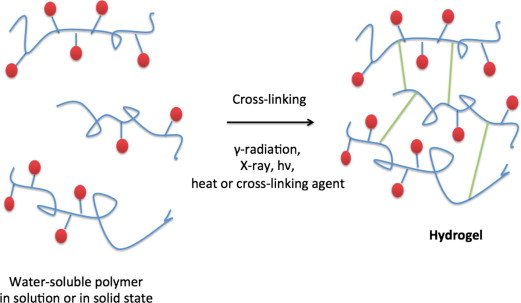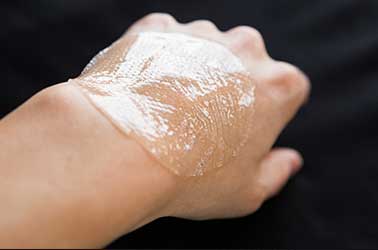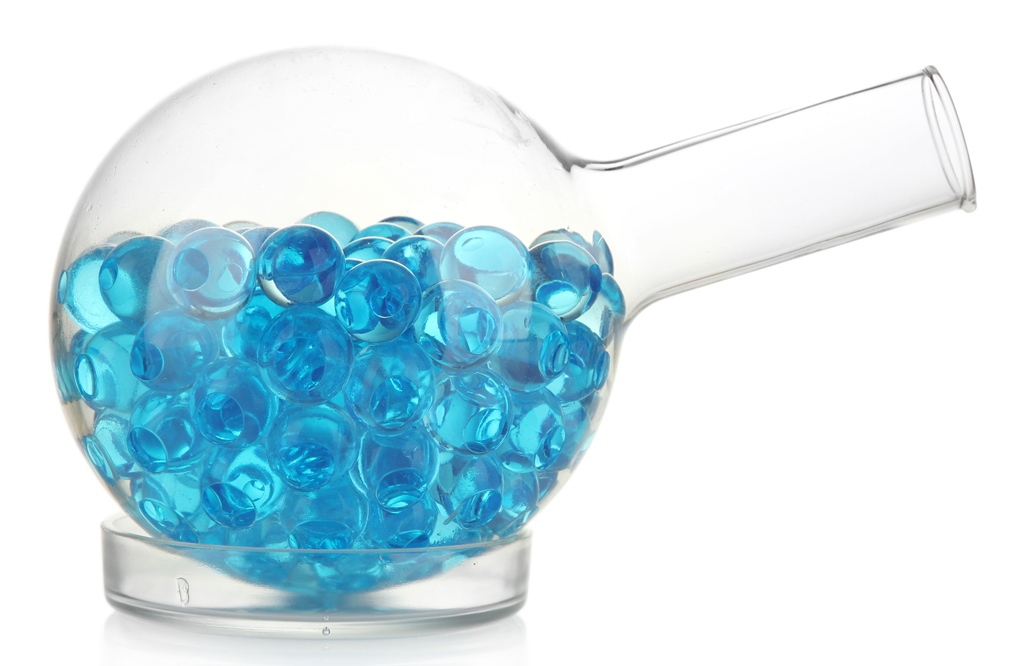We must first know that hydrogels (HG) are polymer-based materials characterized by their extraordinary ability to absorb water and different aqueous solutions and release them over time. These hydrogels are obtained by polymerization and simultaneous crosslinking of one or more monomers or polyfunctional monomers. The physical properties of these materials will depend, mainly, on the balance of ionic groups present in the hydrogel, generating attractive or repulsive interactions between their chains; although also the ionic strength of the medium where they are found, and the elasticity of the polymer network, are important factors for their behavior and their applicability (Rojas de Gáscue et al., 2010).

Hydrogels Structure
The characteristic of absorption and release of aqueous solutions of hydrogel , together with its biocompatibility with human tissues, permeability and low coefficient of friction, has made them suitable for use in medical applications. In addition to that some of them respond to environmental stimuli such as changes in pH, temperature, concentration of species, radiation, among others, so it can be considered as intelligent materials. (Nugent and Higginbotham, 2007).
Aplications
These properties convert the hydrogels into materials of enormous interest. In the literature, several applications have been reported for these materials, among which stand out one as common as contact lenses, followed by the absorption of metal ions, super absorbent materials, biomedicine, biotechnology, pharmacy and industry. They have been used as drug delivery systems, wet dressings, matrices for cell culture, sensors, as a replacement for tendons, skin, ligaments and cartilage, gels sensitive to temperature and pH (Katime I., et al 2004) among many other applications.

Composite
My experience with the university hospital
My experience with this intelligent material was based on a project in which I collaborated with the university hospital in my city, which aimed to evaluate the quality of the biomaterials they used and propose new developments, among which was the synthesis of hydrogels especially for the contracted release of antibiotics and hydrogels based on natural polymers such as chitosan, which would be used for patients with diabetic foot, due to its regenerative and antimicrobial properties.

Conclusion
In recent times the increased application of hydrogels in multiple areas, mainly those related to medicine and the environment; are currently research topics of great interest in the area of materials science, so it is certainly worth knowing this intelligent material of the XXI century, which can solve many medical and environmental problems.
If you liked the post and want to continue seeing more articles of this type, upvote, follow me and resteem.
References:
Bejarano, L., Rojas, B., Prin, J., Mohsin, M., García, A., Mostue, M., ... & Katime, I. (2008). Síntesis y estudio de hidrogeles obtenidos a partir de acrilamida, poli (ácido acrílico) y ácido maleico como potenciales remediadores de contaminantes metálicos en aguas residuales. Rev. Iberoam. Polim, 9(3), 307-312.
Katime, I. A., Katime, O., & Katime, D. (2004). Smart materials of this millenium: Macromolecular hydrogels. Servicio Editorial de la Universidad del Pais Vasco: Bilbao.
Rojas de Gáscue, B., Ramírez, M., Prin, J. L., Torres, C., Bejarano, L., Villarroel, H., ... & Katime, I. (2010). Hidrogeles de acrilamida/ácido acrílico y de acrilamida/poli (ácido acrílico): Estudio de su capacidad de remediación en efluentes industriales. Revista Latinoamericana de Metalurgia y Materiales, 30(1), 28-39.




As great as the other 2 :). You could put links to your older posts so people can read them.
Material Science I: Polymers
Material Science II: Starch
Thank you, I will take your suggestion into account. I'm glad you liked this series.
Cool post. I would like to see the outcomes of your research project discussed here too though.
Sure, in the following post I will be talking more in depth about the release of drugs and the regenerative properties of chitosan hydrogels.